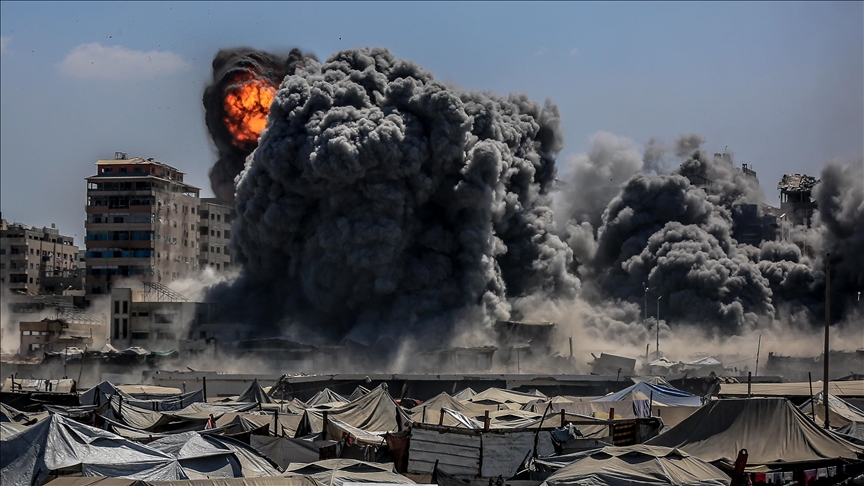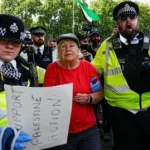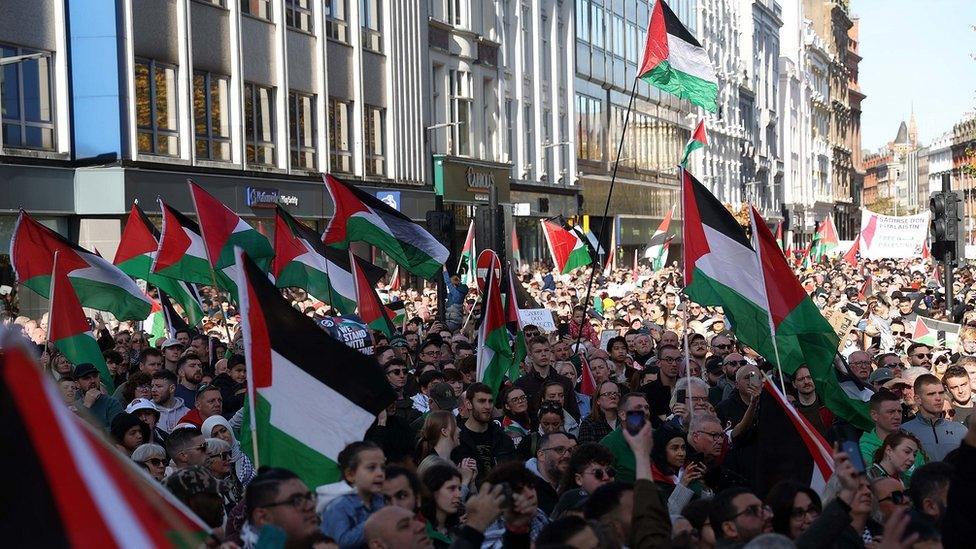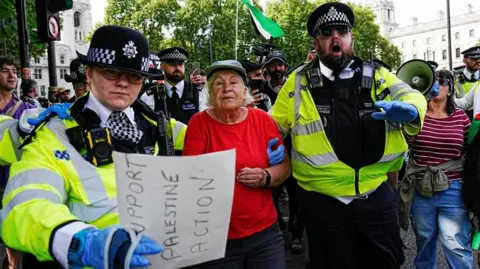On September 15, 2025, the Al-Ghafri high-rise in western Gaza City was reduced to rubble by an Israeli airstrike, marking the second such incident in recent days. This escalation is part of a broader Israeli military campaign aimed at dismantling Hamas’s infrastructure in Gaza City. The destruction of these high-rise buildings has intensified the humanitarian crisis, leaving thousands of civilians displaced and raising serious concerns about the legality and morality of such actions.
- The Destruction of Al-Ghafri High-Rise
- Israel’s Military Objectives in Gaza City
- Humanitarian Impact and Forced Displacement
- International Reactions and Allegations of Genocide
- The Role of High-Rise Buildings in Modern Warfare
- Eyewitness Accounts and Civilian Experiences
- Efforts Toward Ceasefire and Diplomatic Solutions
- FAQs
- What was the Al-Ghafri high-rise?
- Why did Israel target the Al-Ghafri high-rise?
- What are the humanitarian consequences of the destruction?
- How has the international community responded?
- What efforts are being made toward peace?
- Conclusion
The Destruction of Al-Ghafri High-Rise
The Al-Ghafri high-rise, once a prominent residential building in Gaza City, was targeted by Israeli fighter jets on September 15, 2025. Eyewitnesses reported hearing multiple explosions as the building collapsed, sending plumes of smoke into the sky. The Israeli military claimed that the building was used by Hamas for military purposes, a justification that has been met with skepticism by international observers. Human rights organizations have condemned the attack, arguing that it constitutes collective punishment and violates international law.
Israel’s Military Objectives in Gaza City
The Israeli Defense Forces (IDF) have stated that their primary objective in Gaza City is to eliminate Hamas’s military capabilities and secure the release of Israeli hostages. Defense Minister Israel Katz declared that “Gaza is burning,” emphasizing the intensity of the ongoing operations. The IDF has warned civilians to evacuate southern Gaza, designating it as a “safe humanitarian zone,” although reports indicate that this area has also been subjected to Israeli airstrikes.
Humanitarian Impact and Forced Displacement
The escalation of hostilities has led to a severe humanitarian crisis in Gaza. According to the United Nations, over 350,000 residents have fled Gaza City, and many remain displaced in dire conditions further south. Aid groups have condemned the operation as forced displacement, reporting rising starvation-related deaths. The destruction of infrastructure has also hindered the delivery of essential services, exacerbating the suffering of the civilian population.
International Reactions and Allegations of Genocide
The international community has expressed deep concern over the escalating violence in Gaza. A UN inquiry accused Israel of committing genocide, citing evidence such as mass civilian deaths, aid blockages, and forced displacement. Israel has dismissed these allegations, arguing that they ignore Hamas’s role in the conflict and misrepresent the situation.
The Role of High-Rise Buildings in Modern Warfare
High-rise buildings have become strategic targets in modern warfare due to their symbolic and practical significance. In urban centers like Gaza City, these structures often house both civilian and military assets, making them contentious targets. The destruction of such buildings raises questions about the principles of proportionality and distinction under international humanitarian law.
Eyewitness Accounts and Civilian Experiences
Residents of Gaza City have shared harrowing accounts of their experiences during the recent airstrikes. Many reported being forced to flee their homes with little notice, carrying only essential belongings. Some described scenes of devastation, with entire neighborhoods reduced to rubble. These firsthand accounts highlight the human cost of the ongoing conflict and underscore the need for a peaceful resolution.
Efforts Toward Ceasefire and Diplomatic Solutions
Despite the ongoing military operations, there have been calls for a ceasefire and renewed diplomatic efforts. International leaders have expressed support for Israel’s security concerns while emphasizing the importance of diplomacy and civilian protection. Internal dissent within the IDF has emerged, with some commanders and officials expressing concern for hostages’ safety and urging pursuit of a ceasefire to prevent further civilian casualties.
FAQs
What was the Al-Ghafri high-rise?
The Al-Ghafri high-rise was a prominent residential building in western Gaza City, known for its height and central location. It was destroyed by an Israeli airstrike on September 15, 2025, during the ongoing military operations in Gaza.
Why did Israel target the Al-Ghafri high-rise?
The Israeli military claimed that the building was used by Hamas for military purposes. However, this justification has been met with skepticism by international observers and human rights organizations, who argue it may have primarily housed civilians.
What are the humanitarian consequences of the destruction?
The destruction of the Al-Ghafri high-rise and other buildings has led to significant displacement, with over 350,000 residents fleeing Gaza City. The humanitarian crisis is exacerbated by rising starvation-related deaths and hindered access to essential services.
How has the international community responded?
The international community has expressed deep concern, with a UN inquiry accusing Israel of committing genocide. Israel has dismissed these allegations, arguing that they misrepresent the situation and ignore Hamas’s role in the conflict.
What efforts are being made toward peace?
Calls for a ceasefire and renewed diplomatic efforts have emerged. International leaders are advocating for civilian protection and diplomacy, while some internal voices within Israel are urging a halt to airstrikes to prioritize hostages’ safety and prevent further civilian casualties.
Conclusion
The destruction of the Al-Ghafri high-rise is a stark reminder of the devastating impact of urban warfare on civilian populations. As the conflict in Gaza City continues to escalate, it is imperative for all parties to adhere to international humanitarian law and prioritize the protection of civilians. The international community must intensify efforts to mediate a ceasefire and work toward a lasting peace that addresses the underlying causes of the conflict.















